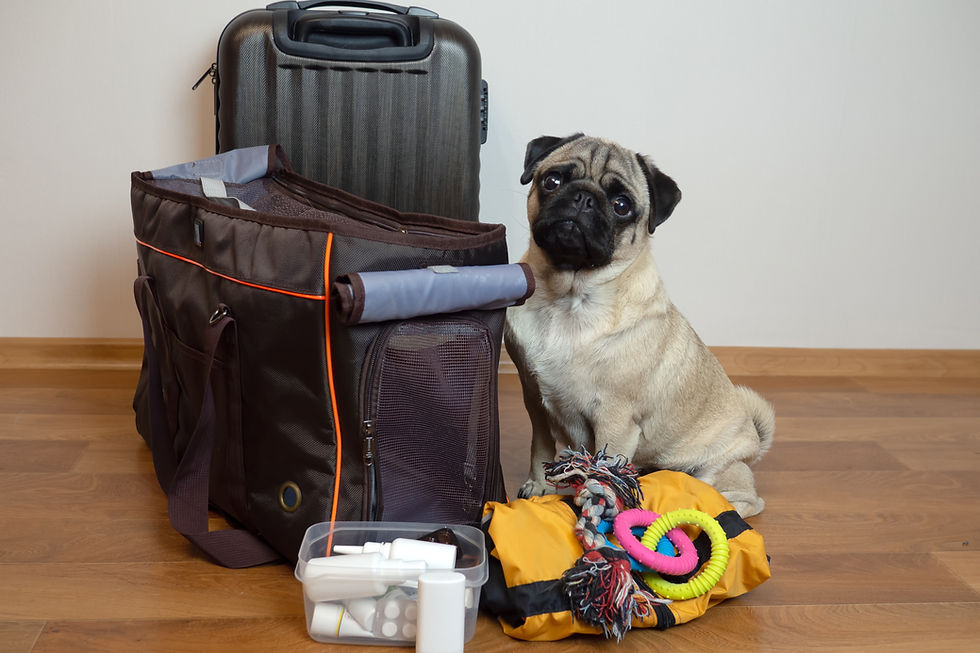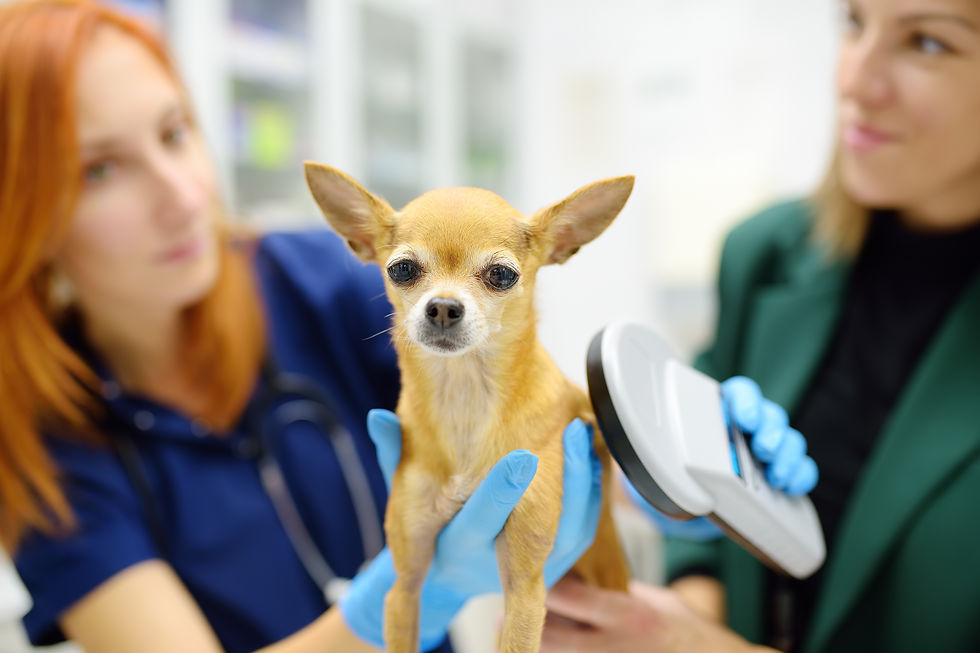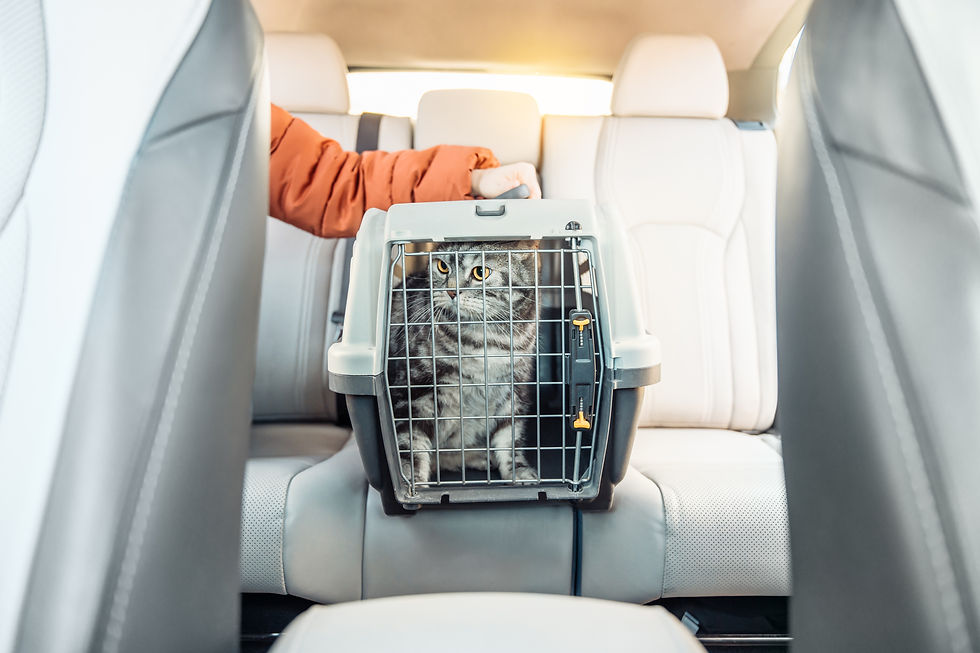Storm Ready: Protecting Your Pets During Hurricanes & Flooding
- Meredith Busch
- Aug 5, 2024
- 3 min read
As hurricane season is in full swing, it's essential to ensure that your entire family, including your pets, are prepared for any potential storms. Proper planning can make a significant difference in keeping your pets safe and comfortable during a hurricane. Here are some critical steps to prepare your pets for a hurricane, Planning might be different for those on the coast who are impacted by coastal surges versus those more inland who might be more impacted by flooding, wind and possible tornadoes.
Assemble a Pet Emergency Kit

Just as you would prepare an emergency kit for yourself, make sure you have one ready for your pets. Ensure you have an emergency kit for your pets that includes:
Food and Water: At least a week's supply of pet food and bottled water.
Medications: Any necessary medications your pet requires, along with dosing instructions.
Identification: Updated ID tags and microchip information.
Leashes and Carriers: A sturdy leash and carrier for each pet, maybe an extra or two of each in case you come across other animals or to have a spare.
Sanitation Supplies: Pet waste bags, litter, a small litter box or indoor potty pads
Comfort Items: Blankets, toys, and any other items that provide comfort to your pet.
Medical Records: Copies of your pet's medical records stored in a waterproof container.
Update Identification

Ensure your pets have up-to-date identification tags and microchips. In the event you get separated, having current ID tags and registered microchips significantly improves the chances of being reunited with your pets.
Evacuation Planning

Identify pet-friendly shelters and hotels along your evacuation route. Not all emergency shelters accept pets, so having a list of pet-friendly options is crucial. Websites like BringFido and Pet-Friendly Travel can help you locate accommodations that accept pets. Additionally, have a plan for how you'll transport your pets, whether in carriers or using pet seat belts in your vehicle.
Practice Evacuation Drills

Familiarize your pets with their carriers and practice evacuation drills. This will help reduce their stress during an actual evacuation. Ensure your pets are comfortable being in their carriers for extended periods and accustomed to the noise and movement associated with travel.
Flood Preparedness

Identify higher ground areas in your home where your pets can stay if flooding occurs. If evacuation becomes necessary, plan routes that avoid flooded areas and know the location of pet-friendly shelters and hotels. Websites like BringFido and Pet-Friendly Travel can help you locate accommodations that accept pets.
Secure Your Home

If you plan to ride out the storm at home, make sure your home is as secure as possible. Keep pets indoors, close all windows, and create a safe space for them in an interior room away from windows. Ensure they have access to their emergency kit, and provide them with a calm, comfortable environment to reduce anxiety.
Monitor Weather Updates

Stay informed about the storm's progress and follow local authorities' instructions. Be prepared to evacuate if necessary and have a go-bag ready for your pets at all times. Ensure you have a battery-operated radio to receive updates in case of power outages.
After the Storm

Once the storm has passed, keep your pets on a leash and be cautious of hazards such as broken glass, sharp debris, or contaminated water. Allow your pets to adjust to their surroundings gradually, as the aftermath of a hurricane can be disorienting for them.
By following these tailored steps, you can ensure that your pets are as prepared as possible for a hurricane. Proper preparation can help alleviate stress for both you and your pets, ensuring their safety and well-being during a storm.
Check out these additional sources for disaster preparedness:
Pet Disaster Preparedness. American Red Cross. https://www.redcross.org/get-help/how-to-prepare-for-emergencies/pet-disaster-preparedness.html
American Humane Pet Preparedness https://www.americanhumane.org/fact-sheet/pet-disaster-preparedness/#:~:text=Evacuate%20your%20family%20and%20pets%20as%20early%20as,veterinarian%E2%80%99s%20contact%20information%2C%20a%20photo%20of%20your%20pet%29.
Pet Friendly Shelters and Hotels- https://www.bringfido.com/







Comments